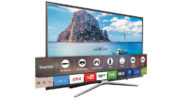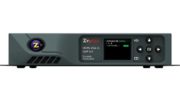You’re finally doing it! After all these years you’ve decided it’s time to break up with the cable company and you’re going with DIRECTV. There’s never been a better time, because DIRECTV is offering more free equipment and more packages than ever before, and you can jump in now and get the Genie system which offers the ability to record five channels at once and watch your recorded programming in up to four rooms. DIRECTV’s the only company with Genie technology, and that includes a wireless client that really works to beam TV through three walls up to 50′ from the base station.
Your install is scheduled… so what should you do?
Well first of course the best thing is to look through our technical library full of product reviews and tips. A lot of our content can be downloaded straight onto your device for even better access when you need it. You might also check out our Ultimate Guide to Genie which is actually used by DIRECTV customer services reps to learn about basic troubleshooting.
Once you’ve got your content downloaded and you’ve read up, the best thing you can do for the tech before he comes is get access to the areas he’ll need. Go to dishpointer.com and look at the line-of-sight requirements for 5-LNB. This will give you some idea where the dish will point and that will also give you a common-sense idea about where the dish will have to be mounted. You can make sure there’s easy access to that area and also, if you need to trim trees on the property, now’s the time.
You can also make sure that the area behind every TV is clear, that there isn’t a rat’s nest of cables there and the tech will have easy access to the place where you’ll want the receivers to sit. Remember that Genie devices come with an RF remote so you can hide the receivers anywhere, even behind doors. Just make sure there’s good ventilation; in other words don’t put the client box in your sock drawer.
Don’t worry about prewiring for the tech because most techs prefer to do their own wiring. It’s just too much of a crapshoot to use customer wiring. You may be the best cable maker in the world but your neighbor also thinks he is, and maybe he puts his cables together with lineman’s pliers.
Also, it should go without saying (but it doesn’t) that every receiver, DVR, and client box will need to be plugged in so make sure there’s ample access to outlets. It’s ok to use power strips or “cube taps” because DIRECTV equipment is some of the most energy-efficient out there; a DIRECTV receiver uses only a little more power than the average tablet, and much less than the average light bulb.
Finally, spend some time thinking about the questions you’ll have. Your DIRECTV tech should spend some time educating you and you’ll want to be ready with the questions you’ll get from other family members. Of course if you forget something you can always check here on The Solid Signal Blog where we have over 5,000 tutorials for you!
All that’s left after that is to sit back and imagine all the digital entertainment that awaits you!





